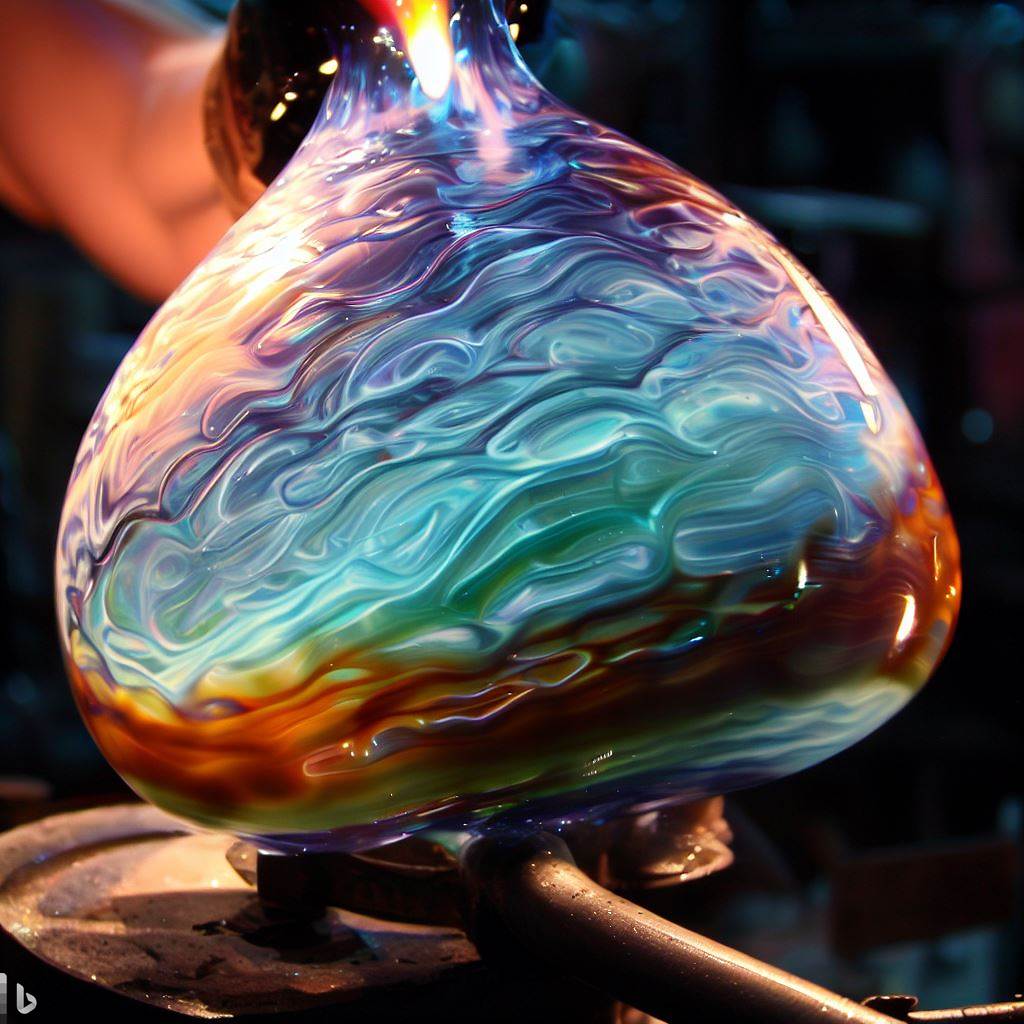Demystifying the Mesmerizing Process of Glassblowing
Glassblowing conjures images of mystifying molten art shaped by master artisans. But how exactly does an ordinary lump of glass go from sand to sculpture? While the culminating designs depend on the artist’s vision, the fundamental process follows specific steps rooted in this ancient craft.
Starting with Raw Materials
The glassblowing process begins with raw materials. While sand is the main component, glass batches also contain soda ash, limestone, and other additives that lower melting temperatures. These raw ingredients are mixed and loaded into furnaces which heat them into a molten state at over 2000°F. The searing heat transforms the materials into glowing liquid glass.
Gathering Molten Glass
Once heated to a molten state, the glass is gathered onto the end of a stainless steel blowpipe. The pipe features a mouthpiece that allows the glassblower to blow air into the hot glass. A glob of the viscous liquid glass is rolled onto the pipe and spun to shape a symmetrical starting point for the piece. This glowing lump of glass is known as the paraison and forms the basis for the final work.
Forming Through Heat and Air
With the paraison attached to the pipe, the real shaping work begins. The glassblower rolls the paraison on a steel table to smooth out irregularities and even the surface. Air blown steadily into the pipe causes the hot glass to expand into various shapes, while gravity and centrifugal force aid in elongating the glass. Paddles, tweezers, and other tools help form more distinctive features.
Adding Color and Embellishments
As the glass takes shape, color can be added by rolling molten colored glass chips into the paraison. Complex patterns and imagery within the glass are achieved by layering different colors and types of glass. Decorative elements like handles or bases are created separately then attached while the glass remains malleable. Once fused, the glass continues to cool and harden.
Careful Cooling and Finishing
After molding the glass into its final form, the long process of cooling begins. Glass needs to decrease in temperature slowly to avoid cracking, so it is moved to an annealing oven to gradually cool overnight. In the morning, any sharp edges are smoothed out and the piece is polished. Finally, the hardened glass emerges ready for display, having made the weeks-long transformative journey from raw sand to sculpted artwork.
While the basics are consistent, each glassblower imparts their distinct flair during the process. Through this magical synthesis of art and science, molten glass becomes an exquisite medium for creative expression. By illuminating the fundamental steps involved, the mystery gives way to a deeper appreciation of the glassblower’s craft.
